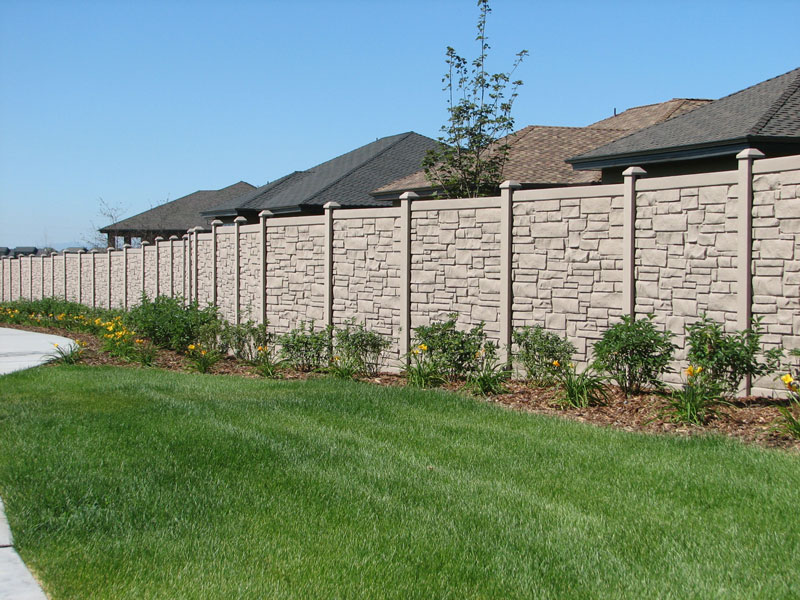Market Adoption
Costs for composites are higher than wood or vinyl. The manufacturing process adds a labor and material acquisition element that does not exist with wood and, though pound-for-pound a composite product is more in line with the cost of vinyl, the significantly higher volume of material in a composite means higher cost. However, the cost benefit over time is clear once the lifetime of a fence is considered.
In a recent study by SBI Reports, forecasted demand for alternative fencing will continue to grow with composites growing the fastest. A case study for Highlands Ranch Metro District in the Denver, Colorado metropolitan area was developed to evaluate various materials and design for appearance, life span, structural integrity, costs, and construction logistics. Several conclusions led to the selection of composite fencing as the best overall solution:
- The posts are as durable as needed and more attractive than masonry.
- The fence wall has a smaller footprint which was important to reduce utility conflicts.
- Requirements for long-term maintenance – staining, post replacement, reduced impact from damage such as snow plowing and low-impact situations – are lower overall than other products compared.
- The analysis indicates that while costs for installation of Trex (the selected brand of composite) are higher at the outset, virtually all of the costs are front-loaded. Comparatively, over the lifespan of fence, the outlay of a wood fence matches Trex at around 10 years and continues to rise while the costs of a Trex product remains constant over its 25-year warranted period. The overall longevity of the fence is anticipated to be 40+ years.
This type of analysis, although perhaps more thorough than an average consumer is likely to perform, creates a growing awareness of the benefits of composite fencing. Consumers expectations of better solutions for low-maintenance fencing will cause the market to continue growing.
The introduction of products creates challenges for fence contractors and their suppliers both in creating a successful sales strategy and becoming acclimated to building with the new product. The economic downturn over the last several years has been disruptive to the traditional business model of standing pat on a core competency. As their consumer base shrinks, the contractors that selectively expand their portfolio of products will have a competitive advantage over those that do not adapt. For the short term, the contractors that make an early entry into composite fencing will be able to differentiate themselves until composites become a more widely accepted commodity as vinyl fencing has become.

